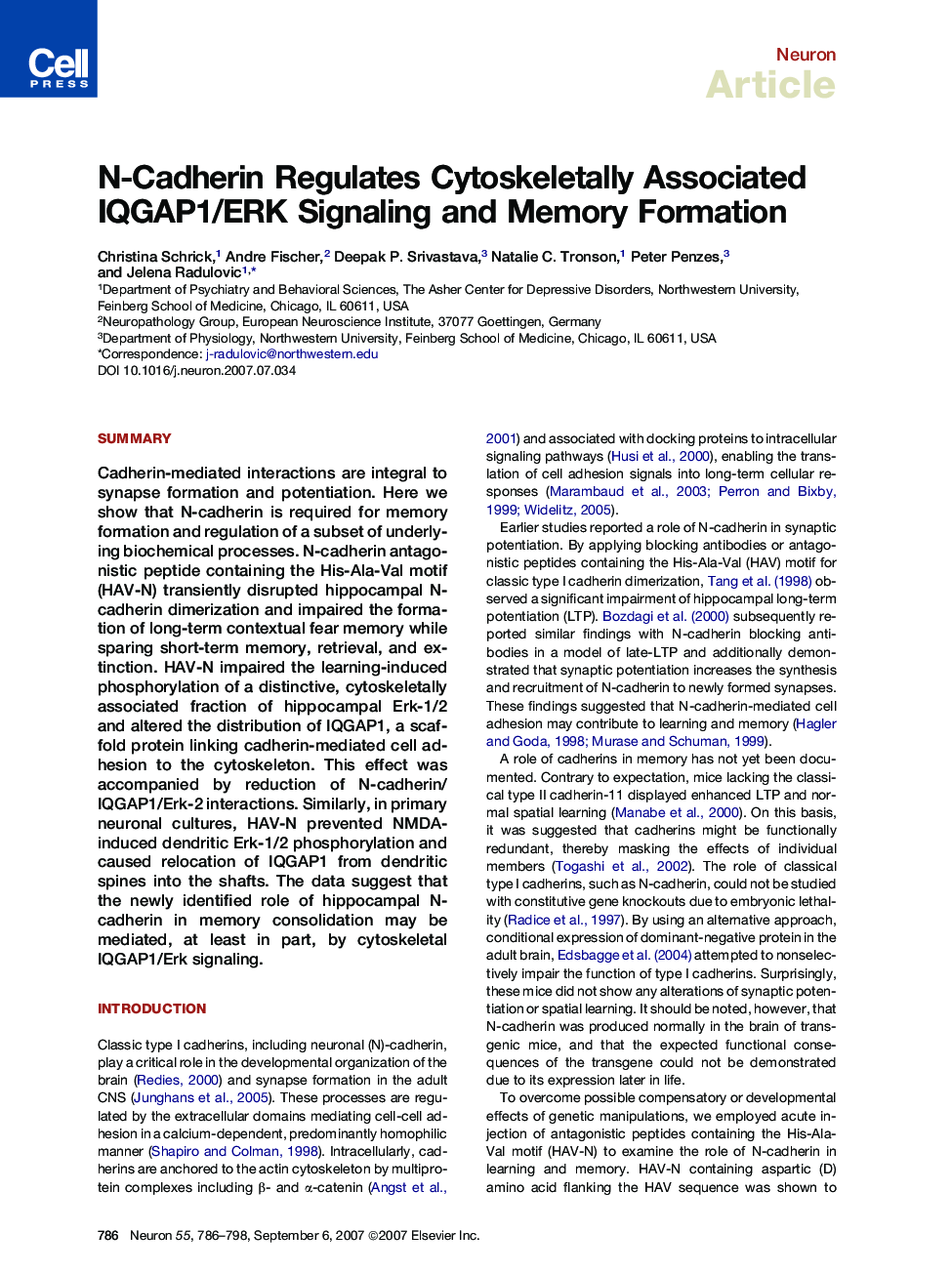| Article ID | Journal | Published Year | Pages | File Type |
|---|---|---|---|---|
| 4322506 | Neuron | 2007 | 13 Pages |
SummaryCadherin-mediated interactions are integral to synapse formation and potentiation. Here we show that N-cadherin is required for memory formation and regulation of a subset of underlying biochemical processes. N-cadherin antagonistic peptide containing the His-Ala-Val motif (HAV-N) transiently disrupted hippocampal N-cadherin dimerization and impaired the formation of long-term contextual fear memory while sparing short-term memory, retrieval, and extinction. HAV-N impaired the learning-induced phosphorylation of a distinctive, cytoskeletally associated fraction of hippocampal Erk-1/2 and altered the distribution of IQGAP1, a scaffold protein linking cadherin-mediated cell adhesion to the cytoskeleton. This effect was accompanied by reduction of N-cadherin/IQGAP1/Erk-2 interactions. Similarly, in primary neuronal cultures, HAV-N prevented NMDA-induced dendritic Erk-1/2 phosphorylation and caused relocation of IQGAP1 from dendritic spines into the shafts. The data suggest that the newly identified role of hippocampal N-cadherin in memory consolidation may be mediated, at least in part, by cytoskeletal IQGAP1/Erk signaling.
